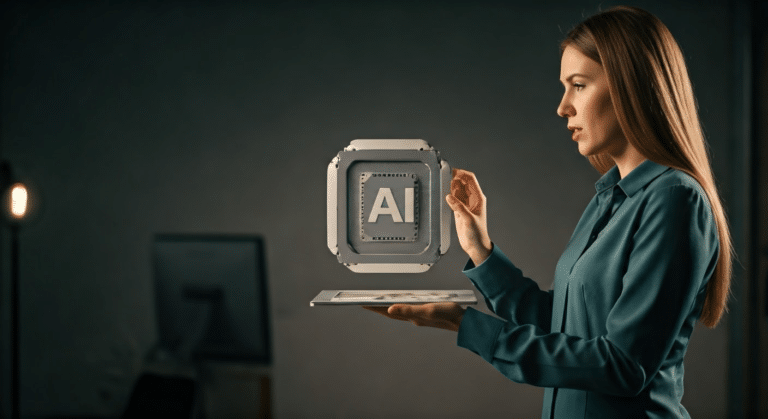AI Crystal Identifier: Revolutionary Technology for Crystal Recognition and Analysis
Last Updated on September 6, 2025 by admin
The world of crystal identification has been transformed by artificial intelligence, making it easier than ever to identify crystals, gemstones, and minerals with unprecedented accuracy. An AI crystal identifier represents a breakthrough in geological and metaphysical sciences, combining advanced machine learning with comprehensive databases to help users recognize specimens from simple photo uploads.
Understanding AI Crystal Identifier Technology
An AI crystal identifier uses sophisticated algorithms trained on thousands of crystal images to provide precise identification of stones, gems, and minerals. This revolutionary technology has democratized crystal identification, putting professional-level recognition tools at your fingertips. Unlike traditional identification methods that require extensive geological knowledge, AI crystal identifier systems can analyze uploaded pictures and deliver accurate results within seconds.
The development of AI crystal identifier technology addresses a fundamental challenge in the crystal world: how to accurately identify specimens without extensive training or expensive equipment. Modern crystal identifier tools leverage computer vision and machine learning to analyze key features, including color, texture, crystal structure, and optical properties from a single image upload.
Key Features of Modern Crystal Identifier Applications
Today’s AI crystal identifier platforms offer a diverse range of features designed to serve both beginners and experts. These tools typically include comprehensive databases covering thousands of crystal varieties, from common specimens like amethyst and calcite to rare collector pieces. The user friendly interface ensures that anyone can upload a photo and receive detailed identification results.
Most crystal identifier applications feature advanced image analysis capabilities that can identify crystals even in challenging lighting conditions. The sophisticated algorithms can recognize subtle variations in color, luster, and crystal habit that distinguish one stone from another. This level of precision identification was previously available only to trained geologists and gemologists.
Professional crystal identifier tools also provide extensive educational resources, helping users learn about their identified specimens. When you identify a crystal through these platforms, you gain access to comprehensive information about formation, properties, metaphysical attributes, and care instructions. This depth of knowledge transforms casual crystal enthusiasts into informed collectors.
How AI Crystal Identifier Technology Works
The process of using an AI crystal identifier is remarkably straightforward. Users simply upload a clear image of their specimen through a browser or mobile app interface. The crystal identifier then analyzes multiple visual characteristics to determine the most likely identification. Advanced systems can scan and process images in various lighting conditions, making them practical tools for field identification.
The underlying technology combines computer vision with extensive training datasets. Each AI crystal identifier has been trained on thousands of crystal images, learning to recognize patterns that distinguish different minerals and gemstones. This machine learning approach allows the system to identify crystals with remarkable accuracy, often matching or exceeding human expert performance.
Modern crystal identifier platforms can analyze multiple specimens simultaneously, making them valuable tools for collectors managing large collections. The systems can also track identification history, allowing users to build comprehensive databases of their personal stone collections without making any mistakes in cataloging.
Benefits of Using AI Crystal Identifier Tools
The advantages of AI crystal identifier technology extend far beyond simple convenience. These tools democratize crystal identification, making expert-level recognition accessible to anyone with a smartphone or computer. Whether you’re exploring nature and discover an interesting specimen or have inherited a collection of unknown stones, an AI crystal identifier can provide instant answers.
For crystal healers and metaphysical practitioners, crystal identifier tools ensure accurate identification of therapeutic stones. Since different crystals carry unique energetic properties, precise identification is crucial for effective healing work. An AI crystal identifier eliminates guesswork, helping practitioners select the correct stones for their spiritual practices.
Collectors benefit enormously from crystal identifier technology, as these tools help verify authenticity and identify rare specimens. The comprehensive databases include information about crystal origins, helping users understand the geological region where their specimens formed. This geographical knowledge adds significant value to any crystal collection.
Educational institutions and geology students find crystal identifier tools invaluable for learning purposes. These platforms provide instant access to identification resources that would traditionally require extensive library research or expert consultation. Students can identify crystals in the field and immediately access relevant educational content.
Crystal Identification from Pictures: Technical Capabilities
The ability to identify crystals from pictures represents one of the most significant advances in mineralogical technology. Modern AI crystal identifier systems can analyze uploaded photos with remarkable precision, recognizing subtle visual cues that distinguish one crystal from another. This capability extends the reach of expert identification to remote locations and makes crystal recognition available 24/7.
Photo-based crystal identification works by analyzing multiple visual characteristics simultaneously. The AI crystal identifier examines color variations, surface textures, crystal faces, inclusions, and overall morphology. Advanced systems can even account for photographic variables like lighting conditions and camera angles, ensuring accurate identification regardless of photo quality.
The technology behind picture-based crystal identification continues to evolve, with newer systems capable of identifying crystals from partial views or damaged specimens. This advancement is particularly valuable for collectors working with rough stones or weathered specimens where traditional identification methods might fail.
Professional-grade crystal identifier platforms can also analyze multiple stones within a single image, making them efficient tools for batch identification. This capability is especially useful for rock scanner app users who need to quickly identify multiple specimens collected during field expeditions.
Popular Crystal Types and AI Identification
AI crystal identifier systems excel at recognizing common crystal varieties that users frequently encounter. Amethyst, with its distinctive purple coloration and hexagonal crystal structure, is easily identified by most crystal identifier platforms. The systems can distinguish between different amethyst varieties, including Brazilian, Uruguayan, and synthetic specimens.
Calcite presents an interesting challenge for crystal identifier technology due to its diverse range of colors and crystal habits. However, advanced AI systems can identify calcite in its various forms, from clear Iceland spar to colorful optical calcite specimens. The crystal identifier analyzes characteristic features like rhombohedral cleavage and double refraction to make accurate identifications.
Carnelian identification demonstrates the sophistication of modern AI crystal identifier technology. These systems can distinguish carnelian from similar-looking stones like red jasper or fire opal by analyzing subtle differences in translucency, color distribution, and surface characteristics. This level of discrimination was previously possible only through hands-on examination by experts.
Pearl identification represents another area where AI crystal identifier technology proves valuable. While technically not crystals, pearls are often included in comprehensive gemstone identification databases. The systems can distinguish natural pearls from cultured varieties and identify different pearl types based on surface characteristics and luster patterns.
Choosing the Best Crystal Identifier Tools
Selecting the right crystal identifier platform depends on your specific needs and level of expertise. Professional users might prioritize tools with extensive databases and detailed technical information, while casual collectors might prefer user friendly interface design and simplified identification processes. The best crystal identifier applications offer a balance between comprehensive functionality and ease of use.
When evaluating crystal identifier options, consider the size and quality of the underlying database. Platforms with larger datasets can identify a more diverse range of specimens, including rare and unusual crystals. Look for systems that regularly update their databases with new specimens and improved identification algorithms.
The quality of educational resources provided by crystal identifier platforms varies significantly. The best tools offer comprehensive information about identified specimens, including formation processes, metaphysical properties, and care instructions. These resources help users develop their understanding of crystallography and mineralogy beyond simple identification.
Mobile compatibility is crucial for modern crystal identifier applications. The best platforms offer both browser-based and mobile app versions, ensuring you can identify crystals whether you’re at home or exploring remote locations. Cross-platform synchronization allows you to access your identification history from any device.
Integration with Broader Geological Knowledge
AI crystal identifier technology represents just one component of a broader revolution in geological and mineralogical sciences. These tools work best when integrated with traditional identification methods and comprehensive educational resources. Understanding crystal formation processes, geological environments, and mineral associations enhances the value of AI-powered identification.
The most effective crystal identifier platforms provide context about specimen origins and formation environments. This information helps users understand not just what their crystal is, but how and where it formed. Such geological knowledge adds significant depth to crystal appreciation and collection building.
Modern crystal identifier systems also integrate with location-based services, helping users understand the geological characteristics of regions where they collect specimens. This integration provides valuable context about local geology and can guide future collecting expeditions.
Future Developments in Crystal Identification Technology
The future of AI crystal identifier technology promises even more sophisticated capabilities. Emerging systems will likely incorporate additional analytical methods beyond visual recognition, potentially including spectroscopic analysis and chemical composition determination. These advances will further improve identification accuracy and extend capabilities to challenging specimens.
Augmented reality integration represents an exciting frontier for crystal identifier applications. Future platforms might overlay identification information directly onto live camera feeds, creating immersive educational experiences. This technology could revolutionize field geology and crystal collecting by providing instant, contextual information about specimens in their natural environments.
Collaborative identification platforms are also emerging, combining AI crystal identifier technology with expert human review. These hybrid systems offer the speed of artificial intelligence with the nuanced understanding of experienced mineralogists, providing the most accurate identification possible.
Conclusion
AI crystal identifier technology has fundamentally transformed how we approach crystal identification and appreciation. These sophisticated tools make professional-level identification accessible to everyone, democratizing geological knowledge and enhancing our connection with the mineral world. Whether you’re a serious collector, spiritual practitioner, or curious beginner, AI crystal identifier platforms provide invaluable resources for understanding and appreciating crystals.
The continued evolution of crystal identifier technology promises even more exciting developments ahead. As these tools become increasingly sophisticated and accessible, they will play an ever-greater role in education, research, and personal crystal exploration. The combination of artificial intelligence with traditional geological knowledge creates powerful resources that benefit users across all levels of expertise.
By embracing AI crystal identifier technology while maintaining appreciation for traditional identification methods, we can develop a comprehensive understanding of the mineral world that serves both scientific and spiritual purposes. These tools represent not just technological achievements, but gateways to deeper appreciation of Earth’s geological treasures.
References and Additional Resources
For comprehensive crystal identification services and additional tools, explore these professional resources:
- Identify Rock App – Advanced rock and mineral identification platform
- Crystal Identifier – Specialized crystal recognition services
- Rock Identifier – Professional geological identification tools
- Rock Identification – Comprehensive rock and crystal analysis
- AI Rock ID – Cutting-edge AI-powered mineral identification





